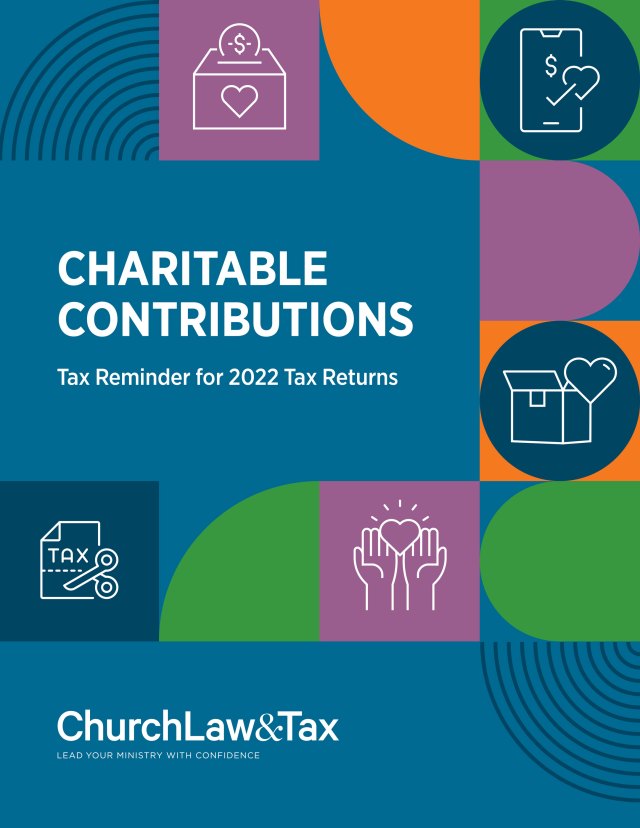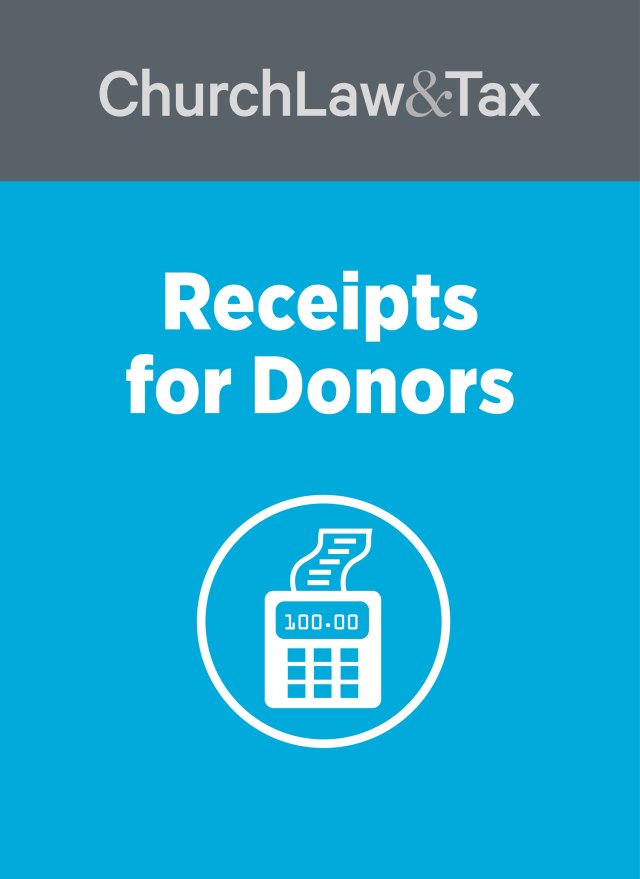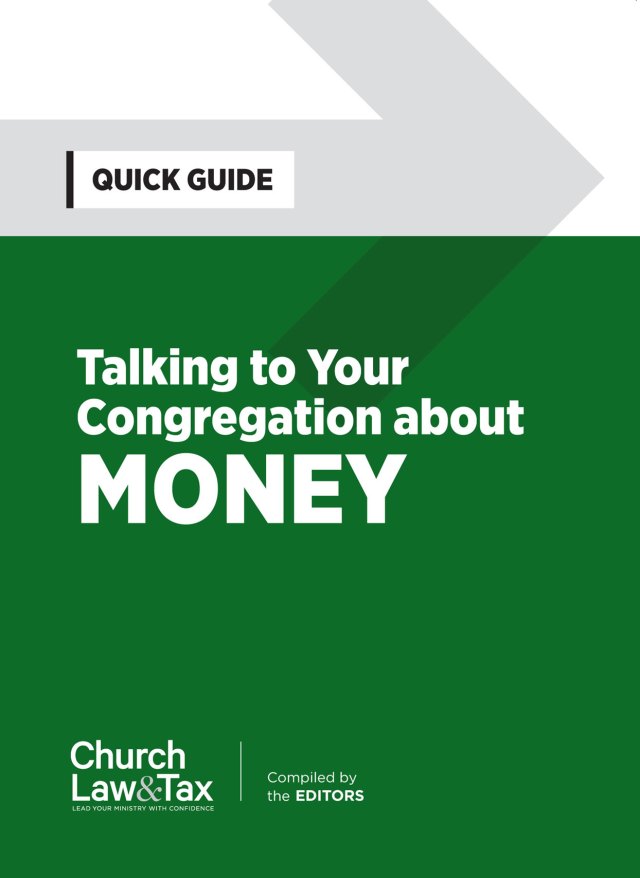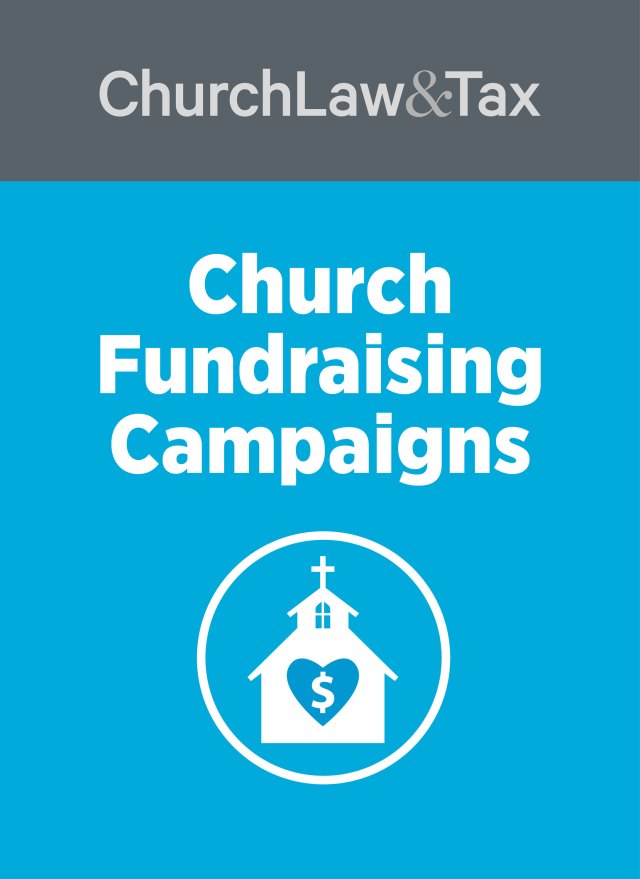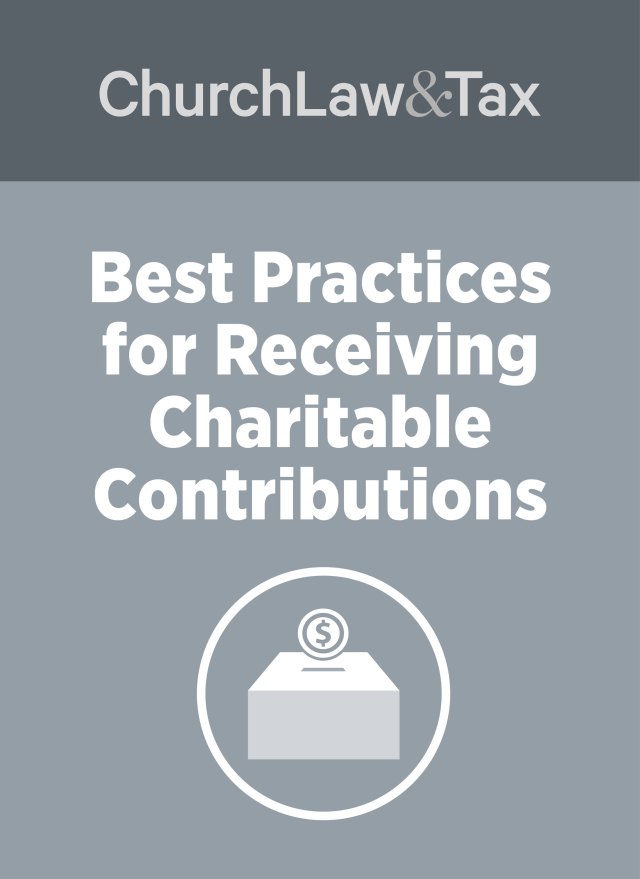Background. New rules for substantiating charitable contributions took effect in 1994. Now is a good time for church treasurers to be sure that the church’s receipts reflect the new requirements. These requirements were summarized in a table in the December 1993 issue of Church Treasurer Alert! The important points are these:
Individual contributions of $250 or more. Donors no longer can substantiate individual contributions of $250 or more with canceled checks. They must have a receipt from the church that contains the following information:
- Name. The donor’s name (a social security number is not required).
- Itemization. Each individual contribution of $250 or more must be shown on the receipt. Do not lump all contributions together.
- Value of any goods or services provided by charity. A statement indicating whether or not the church provided any goods or services to the donor in exchange for the contribution, and if so, a good faith estimate of the value of those goods or services.
- If charity provides no goods or services, or only “intangible religious benefits.” If the church provides no goods or services to a donor in exchange for a contribution, or if the only goods or services the church provides are “intangible religious benefits,” then the receipt must contain a statement to that effect. The term “intangible religious benefit” is defined by the new law as “any intangible religious benefit which is provided by an organization organized exclusively for religious purposes and which generally is not sold in a commercial transaction outside the donative context.” The committee report to the new law states that the term intangible religious benefit includes “admission to a religious ceremony” or other insignificant “tangible benefits furnished to contributors that are incidental to a religious ceremony (such as wine).” However, the committee report clarifies that “this exception does apply, for example, to tuition for education leading to a recognized degree, travel services, or consumer goods.”
- Receipt must be contemporaneous. The receipt must be “contemporaneous,” meaning that it must be received by the donor on or before the earlier of the following two dates: (1) the date the donor files a tax return claiming a deduction for the contribution, or (2) the due date (including extensions) for filing the return.
Quid pro quo contributions of more than $75. A church has additional requirements with respect to individual quid pro quo contributions of more than $75. A quid pro quo contribution is a payment “made partly as a contribution and partly in consideration for goods or services” provided to the donor by the church. For example, a donor contributes $100 to her church, but in return receives a dinner worth $30. Under the new rules a church or other charity is required to provide a written statement to the donor that (1) informs the donor that the amount of the contribution that is tax deductible is limited to the excess of the amount of any money (or the value of any property other than money) contributed by the donor over the value of any goods or services provided by the church or other charity in return, and (2) provides the donor with a good faith estimate of the value of the goods or services furnished to the donor.
A written statement need not be issued in either of the following situations: (1) only token goods or services (with a value not exceeding the lesser of $64 or 2% of the amount of the contribution) are provided to a donor; or (2) the donor receives only intangible religious benefits (as defined above) in exchange for his or her contributions.
What church treasurers should do now. There are a number of ways for church treasurers to comply with the new substantiation and quid pro quo reporting requirements. Here are some suggestions.
1. A “2 form” approach. The simplest way for church treasurers to respond to the new substantiation rules will be to use the church’s current receipt form for all contributions not subject to the new substantiation rules, and then use a second form to report contributions that are covered by the new rules. The receipt form used by the church in 1993 (before the new rules took effect) can be used for all individual contributions of cash or property of less than $250, assuming that the new quid pro quo reporting rules do not apply. If this option is selected, the church’s customary receipt must enable multiple contributions on the same day to be recorded separately. If this is not possible, and multiple contributions made on the same day must be aggregated, then this will jeopardize the deductibility of contributions totaling $250 or more on the same day, unless the church’s customary receipt is modified to include the language required by the new rules.
For contributions of property valued by the donor at less than $250, a church’s receipt must comply with “Rule 5” (explained in the December 1993 issue of Church Treasurer Alert!).
2. The modified 2 form approach. The next easiest way for church treasurers to respond to the new substantiation requirements will be for a simplified receipt to be used that separately lists each cash contribution (date and amount), and contains the language required by the new rules. Illustration 1 represents such a form. Illustration 1 satisfies all of the new substantiation rules with the minimal complexity. However, it makes three very important assumptions: (1) the church provided no goods or services in connection with any individual contribution of $250 or more other than intangible religious benefits; (2) no donor made any quid pro quo contribution; and (3) only cash contributions were made (and not property). Obviously, these assumptions will hold true for many if not most donors. However, if any one or more assumptions is not met, then appropriate adjustments will be required. For example, if a donor did make a quid pro quo contribution, then an appropriate statement would need to be issued separately by the church. And, if the church provides goods or services or more than insubstantial value in exchange for a contribution of $250 or more, it would need to adapt this form or include a separate statement with the form describing and valuing the goods or services that were provided.
3. Keep donors informed. To avoid jeopardizing the tax deductibility of charitable contributions, churches should advise donors at the end of 1994 not to file their 1994 income tax returns until they have received a written acknowledgement of their contributions from the church. This communication should be in writing. To illustrate, the following statement could be placed in the church bulletin or newsletter for the last few weeks of 1994, or included in a letter to all donors:
IMPORTANT NOTICE: To ensure the deductibility of your church contributions, please do not file your 1994 income tax return until you have received a written acknowledgment of your contributions from the church. Under new rules that took effect this year, you may lose a deduction for some contributions if you file your tax return before receiving a written acknowledgement of your contributions from the church.
ILLUSTRATION
First Church
Chicago, Illinois
December 31, 1994
Cash Contributions Statement for October through December of 1994
John A. Doe
Codes:
10 = general fund –––30 = missions
20 = building fund –––40 = other
For the calendar quarter October through December of 1994, our records indicate that you made the following cash contributions. Should you have any questions about any amount reported or not reported on this statement, please notify the church treasurer within 90 days of the date of this statement. Statements that are not questioned within 90 days will be assumed to be accurate, and any supporting documentation (such as offering envelopes) retained by the church may be discarded. No goods or services were provided to you by the church in connection with any contribution, or their value was insignificant or consisted entirely of intangible religious benefits.
| code | date | amount | code | date | amount | code | date | amount |
| 10 | Oct 2 | 30.00 | 10 | Nov 6 | 30.00 | 10 | Dec 18 | 30.00 |
| 10 | Oct 9 | 30.00 | 10 | Nov 13 | 30.00 | 10 | Dec 25 | 100.00 |
| 10 | Oct 16 | 30.00 | 10 | Nov 20 | 30.00 | 30 | Dec 25 | 200.00 |
| 30 | Oct 23 | 500.00 | 10 | Nov 27 | 30.00 | |||
| 10 | Oct 23 | 30.00 | 10 | Dec 4 | 30.00 | |||
| 10 | Oct 30 | 30.00 | 10 | Dec 11 | 30.00 | |||
| TOTAL | 1160.00 |
This article originally appeared in Church Treasurer Alert, November 1994.
